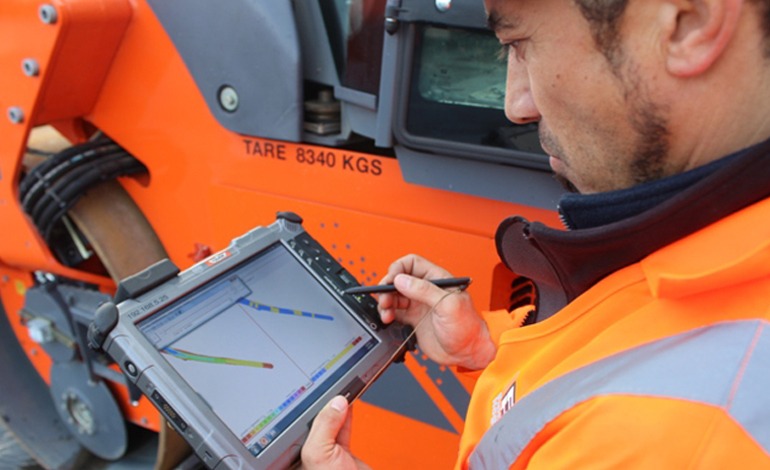Fulton Hogan has recently taken delivery of two new Hamm HD80+ eight ton twin drum vibratory rollers; among the first such machines in New Zealand to feature Hamm Compaction Quality (HCQ) technology.

Supplied and supported by Wirtgen New Zealand, the new Hamm rollers offer both vibratory and oscillation compaction options within the same machine, and join Fulton Hogan’s Auckland asphalt surfacing fleet.
Adam Nichol, Fulton Hogan’s Northern Zone Surfacing operations advisor, says it is a technical leap forward to be able to utilise these machines for asphalt compaction.
“Having Hamm HD80+ machines that offer both vibratory and oscillation compaction gives us application options we haven’t had before.
“Oscillation technology has been around for some time now, but it’s about utilising it in the right environments, where a non-directed compaction process might be needed. The Hamm HD80+ gives our frontline operators, as well as our technical and planning staff, the opportunity to utilise this technology in ways that could really future-proof the way we work.”
In addition to the benefits of oscillation compaction technology, the Hamm HD80+ compactors also offer Fulton Hogan’s asphalt paving crews Hamm Compaction Quality (HCQ) technology.
Designed by Hamm’s world leading research and development team, HCQ is a modular system for measuring, evaluating and documenting the compaction process in real-time and offering roading personnel the ability to analyse results.
“From a quality perspective HCQ means our team is working more efficiently and with greater understanding,” says Adam.
“Instead of passing over a specified area of asphalt 10 times, we might only need to pass over it half as many times. With the compaction system in the two Hamm HD80+ machines, we can confidently map compaction movements and then hand-on-heart say ‘yes’, we have passed over that stretch of pavement that many times.
“This is great from a quality perspective as we can accurately validate our Quality Assurance goals. But there are other benefits here; because we have an accurate measure on how many passes we need to make, we’re not wasting fuel or running the machines any longer than necessary and potentially causing disruptions to the public.
“These are real, tangible benefits that Hamm’s system gives us,” he says.
Wirtgen New Zealand general manager Richard Seay believes the key advantage of the HCQ system is the empirical data evidence the technology collects. The Hamm-developed feature set is somewhat unique when compared with other systems available.
“The HCQ system is already at work for clients on other major roading projects around New Zealand, with good results,” he says.
“A significant effort has been put into launching HCQ into the New Zealand market and Wirtgen New Zealand believes advances in technology such as this will become ever more critical to project successes.”
The HCQ system ensures optimal compaction across the surface and eliminates the risk of under- or over-compaction by indicating the number of machine passes the operator has made, along with attained compaction/vibration type via a clear and intuitive colour-coded system on the display panel.
Using the colour-coded guidance, HCQ shows the operator in real-time which areas of the compacted surface have already attained the desired load-bearing capacity and where additional passes will be required. In essence the operator has a ‘compaction map’ giving full feedback on compaction performance.
“The temperature readings, which are taken from infrared sensors on both drums, are important because of the relationship between the temperature of the mix and the compactive effort required to optimise density,” Adam continues.
“HCQ gives us an assured playing field every time we’re compacting though. Every scenario is different and can affect the temperature of the mix. But regardless of different times of day, different ambient temperatures brought about by seasonal variation, or even something as simple as how long the mix has taken to get to site; our guys can confidently work in the right range to get the right result.”
Data from the entire compaction process can then be downloaded onto a USB stick from the HCQ unit within the cab and checked on a laptop at the work site, analysed at head office at a later date, or archived on a project-by-project basis.
Adam believes that compaction process data gathered with HCQ could eventually become a part of the tendering process, where quality is key, but accurate predictions on man and machine hours and material requirements help establish the bottom line.
“Tools like this are fantastic because they give us certainty in what we’re doing,” Adam concludes.
“And that’s the difference between building quality pavement or not.”


Parting words from Jeremy Sole- a final column